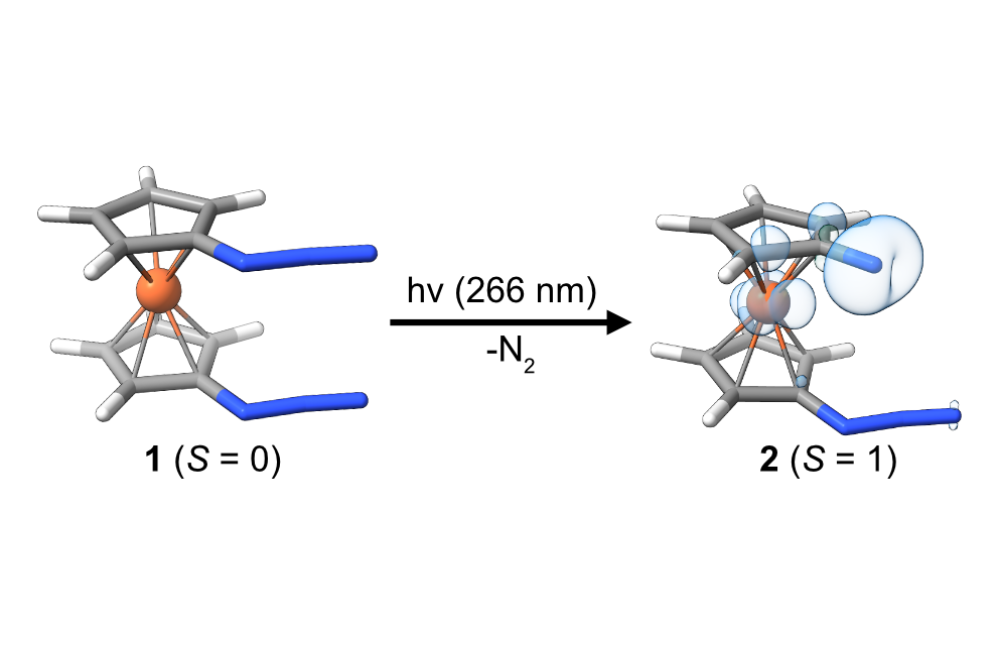Investigation of Photochemical Pathways to Metal-Nitrene Compounds from Azide Precursors I
Introduction
Metal nitrene compounds are highly reactive species with a unique electronic structure. Such compounds are promising reagents for nitrogen-atom transfer reactions, however the processes involved in generating suitable metal nitrene species are not well understood. Besides thermal azide decomposition, one way to generate metal nitrenes is via photodissociation of dinitrogen from a metal azide precursor. Understanding the processes taking place during photoactivation is key to identifying features that govern the photoreactivity profile. A unique advantage of photochemical reactions is that reactivity profiles can be achieved that would be impossible via thermal reactions. The ultrafast photophysical and photochemical processes involved make experimental characterization of such reactions very difficult. This study combines state-of-the-art ultrafast experimental spectroscopy with advanced quantum chemical calculations to gain insight into the photodissociation process.
Methods
Investigating the photoreactivity of transition metal compounds requires sophisticated quantum chemistry methods that can describe the electronic structure adequately. In this study, we employed advanced computational techniques to trace the dynamic processes that occur immediately after the initial photoexcitation. This involved exploration of the vast potential energy surfaces in a large number of excited states. Specifically, we used density functional theory, time-dependent density functional theory and structure optimisations in the ground state and electronically excited states to identify reactants, intermediates and products and characterise them via computational UV-vis and IR spectroscopy.
Results
Through our research, we successfully identified a key intermediate in the photodissociation process of a ferrocene-azide derivative. By tracing the relaxation of the initially prepared excited states, a structural change was identified that plays a key role in the experimentally observed reactivity pattern. By correlating the simulated data with experimental measurements we have achieved detailed insights into the photodissociation of dinitrogen from azide precursors.
Discussion
Our ability to leverage novel software implementations of recent quantum mechanical methods proved invaluable in gaining a deep understanding of the photophysical and photochemical processes that occur on ultrafast timescales following the initial photoexcitation. The combination of ultrafast spectroscopy, recent advances in quantum chemical methods, and state-of-the-art computational resources has opened up the possibility of conducting detailed studies on complex photodynamic processes that were not feasible previously. This study not only provides crucial insights into the photodissociation of dinitrogen from a ferrocene-azide precursor but also establishes a foundation for future investigations. We aim to apply the experience gained in this project and established computational protocols to explore related systems, thereby broadening the scope of our research to include the study of other photochemically active systems. By unraveling the intricacies of photodissociation processes and understanding the underlying principles that govern them, we hope to develop more efficient and selective reactions that find application in a wide variety of fields. In conclusion, this research represents a significant step forward in the understanding of azide-to-nitrene photoconversion reactions. The combination of advanced quantum chemistry methods, cutting-edge experimental techniques, and powerful computational resources has allowed us to delve into the world of ultrafast photoreactivity, unlocking new possibilities for scientific exploration and technological advancements.




